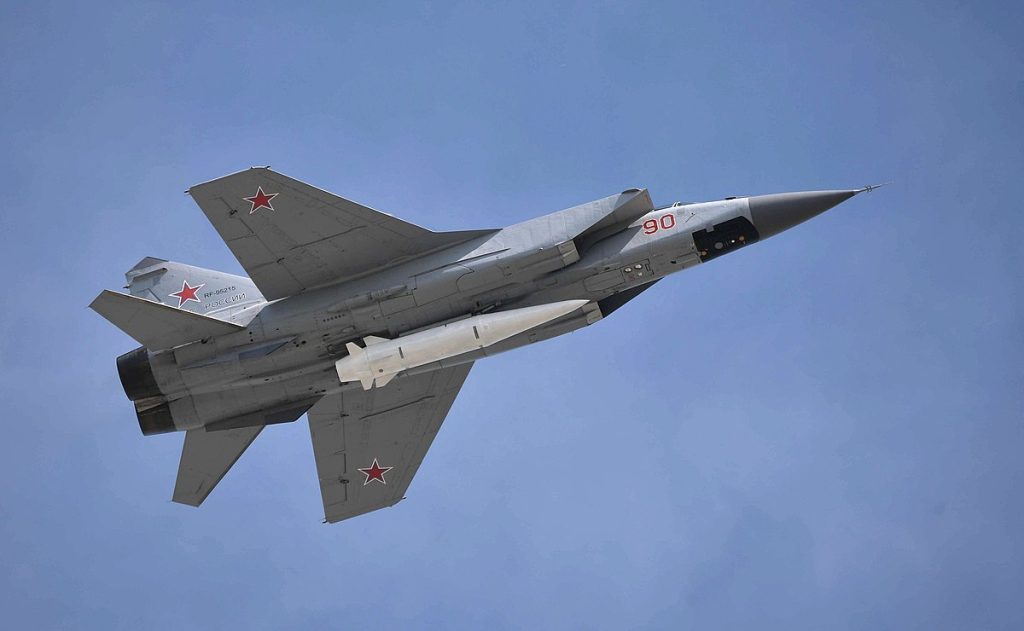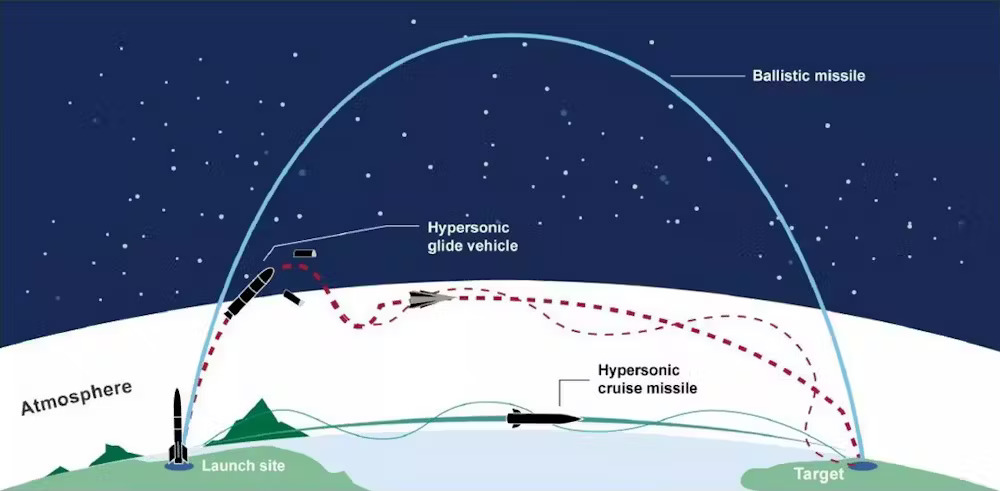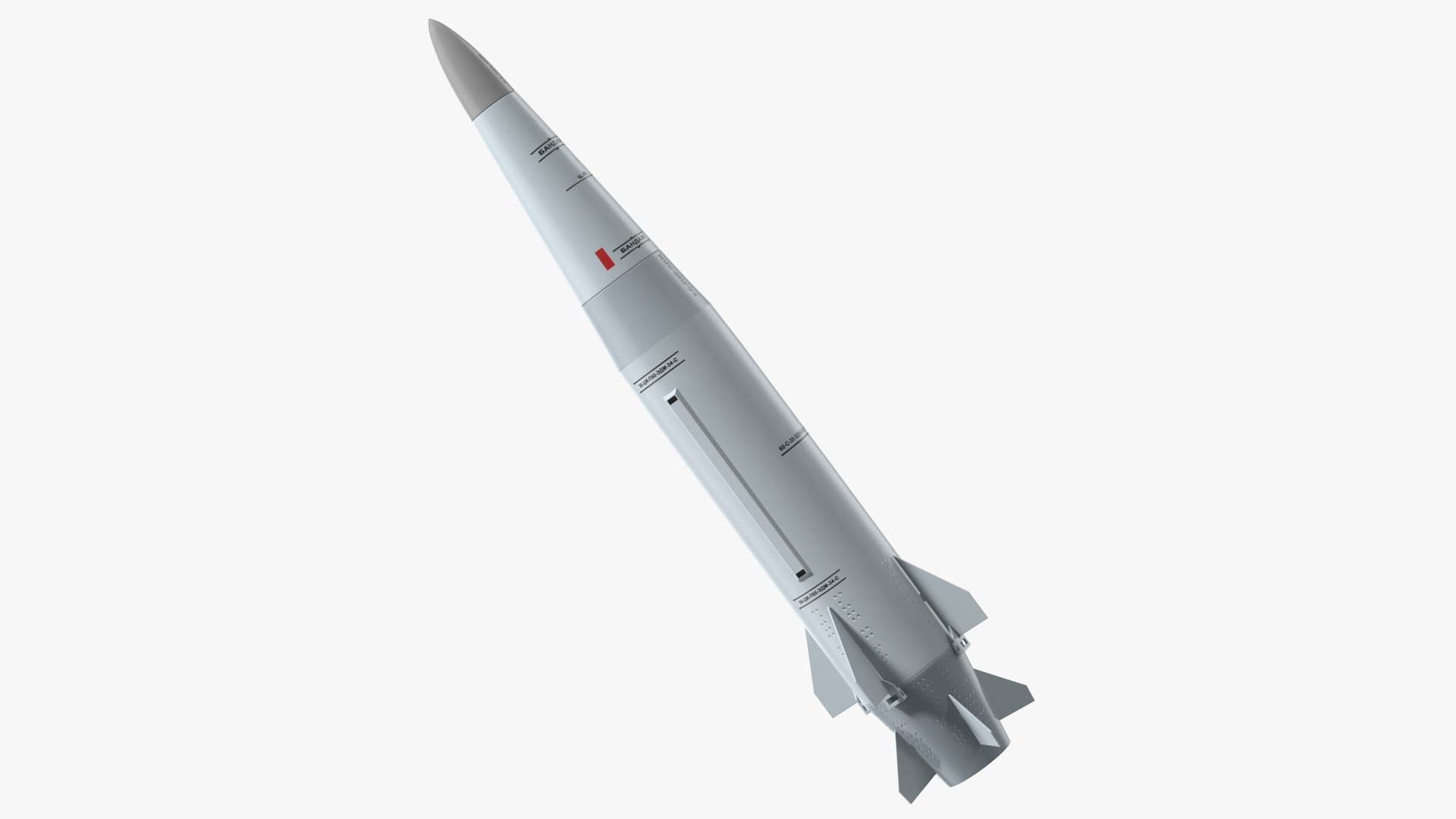On June 3, 2025 – Russia launched its Kinzhal hypersonic missile at the Ukrainian port city of Mykolaiv, marking the first recorded use of this advanced missile system on the southern front since the full-scale war began in 2022. The strike, which disrupted critical infrastructure and triggered air raid sirens across the region, has renewed global focus on Russia’s high-speed, precision-strike weapons. But what exactly is the Kinzhal missile, and why is its use in Ukraine significant?
Also Read: Russia Launches Hypersonic ‘Kinzhal’ Missile at Mykolaiv in First Strike on Southern Ukrainian City
What Is the Kinzhal Hypersonic Missile?
The Kh-47M2 Kinzhal, also known as “Dagger,” is a nuclear-capable hypersonic missile developed by Russia to penetrate sophisticated missile defense systems. First showcased by President Vladimir Putin in 2018, the Kinzhal was designed to strike high-value targets at extreme speeds, making it difficult to detect and intercept. It is primarily launched from MiG-31K fighter jets and may also be integrated with Tu-22M3 bombers in the future.
Kinzhal Missile Specifications and Features
- Type: Air-launched aeroballistic hypersonic missile.
- Speed: Up to Mach 10 (~12,000 km/h).
- Range: 1,500–2,000 km (MiG-31K), potentially over 3,000 km (Tu-22M3).
- Warhead: Conventional or nuclear (approx. 480–500 kg).
- Guidance System: Inertial navigation + GLONASS satellite positioning.
- Launch Platforms: MiG-31K, Tu-22M3 (future), potentially MiG-41.
- Primary Targets: Hardened bunkers, critical infrastructure, warships, NATO weapon depots.
- Key Advantage: Extreme speed and mid-flight maneuverability, making it highly resistant to interception.

Why Is the Kinzhal Missile Considered Hypersonic?
Hypersonic missiles are defined by their ability to travel at speeds exceeding Mach 5. The Kinzhal surpasses this threshold significantly by reaching up to Mach 10. Unlike traditional ballistic missiles, the Kinzhal is aeroballistic, allowing it to perform limited maneuvers in the upper atmosphere. This evasiveness makes it harder to track and shoot down, especially during the midcourse phase of its flight.
However, experts debate whether the Kinzhal qualifies as a “true” hypersonic weapon like a glide vehicle due to its trajectory being similar to modified Iskander ballistic missiles launched from the air.

How Does the Kinzhal Compare to Other Hypersonic Missiles?
| Feature | Kinzhal (Russia) | Avangard (Russia) | DF-ZF (China) | ARRW (USA) |
|---|---|---|---|---|
| Launch Platform | Air-launched (MiG-31K) | ICBM (boost-glide) | Ballistic missile (HGV) | Air-launched (B-52) |
| Speed | Mach 10 | >Mach 20 | Mach 5–10 | Mach 5–8 (planned) |
| Range | ~2,000 km | >6,000 km | ~2,000 km | ~1,600 km (planned) |
| Warhead | Nuclear/Conventional | Nuclear only | Conventional | Conventional |
| Guidance | Inertial + GLONASS | Inertial + GLONASS | Inertial + BeiDou | Inertial + GPS |
While the Kinzhal is faster and more flexible than many traditional missiles, it is considered less maneuverable than next-generation hypersonic glide vehicles (HGVs) like Avangard and DF-ZF.
Can the Kinzhal Be Intercepted?
Intercepting a Mach 10 missile is extremely difficult:
- Patriot PAC-3, SAMP/T, and S-300/400 systems can engage fast targets but have limited success against maneuvering hypersonic missiles.
- Ukraine claims successful interceptions, but Russia disputes the outcomes.
- Experts say interception is possible only during final descent phase if precise tracking data is available.
This highlights a critical gap in current missile defense technology worldwide.
Conclusion
The Kinzhal missile strike on Mykolaiv represents a powerful demonstration of Russia’s long-range, precision hypersonic capability. Its deployment reflects the escalating sophistication of modern warfare and highlights serious vulnerabilities in existing defense systems.
As the global arms race shifts toward hypersonic dominance, understanding the Kinzhal’s role in the Russia–Ukraine war is essential to grasp the future of strategic deterrence and missile defense.













